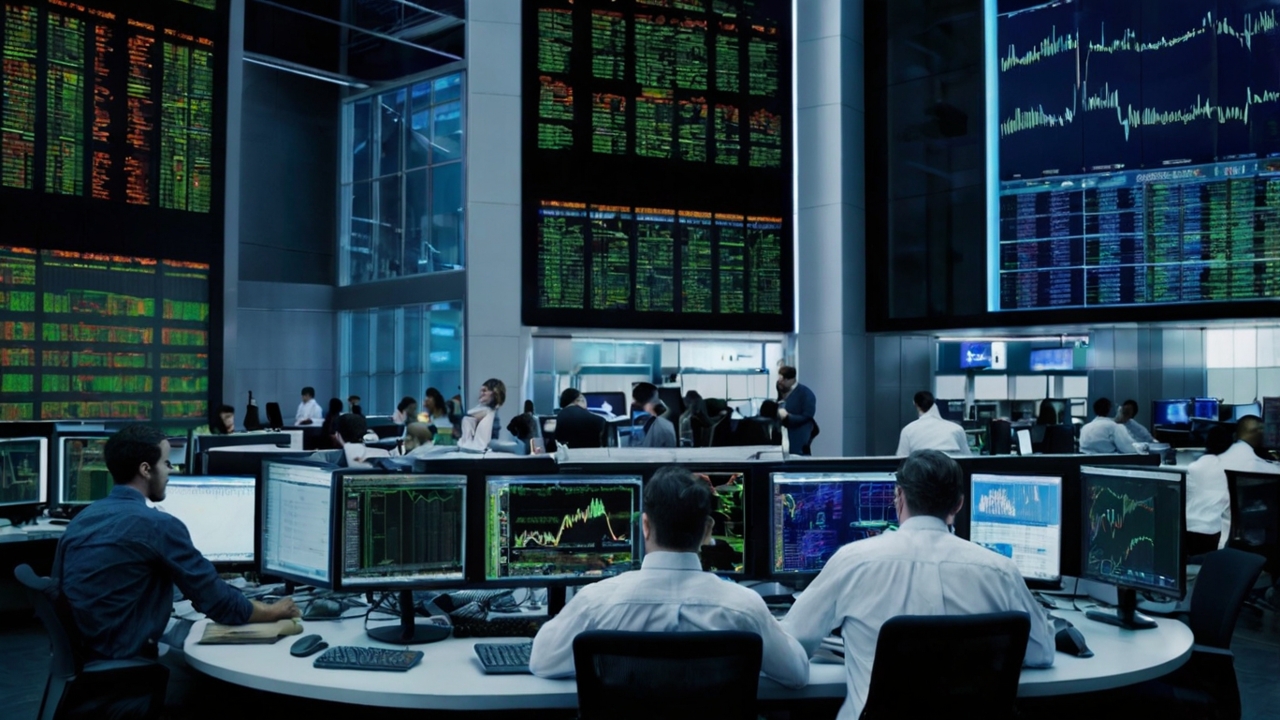Introduction to the World of Charts and Candlesticks
In the world of finance and investing, the ability to understand and analyze charts and candlesticks is a vital skill. These visual tools provide valuable insights into market behavior, helping investors make informed decisions about buying or selling assets. This comprehensive guide will provide you with the knowledge and tools necessary to decode these charts, transforming complex data into successful investment strategies.
Chapter 1: Basics of Charts
What are Charts?
Charts are visual representations of financial data over time. These charts display the price movements of assets, such as stocks, currencies, and commodities, allowing investors to identify trends and patterns.
Common Types of Charts:
- Line Chart: The simplest type of chart, connecting data points with a continuous line, showing overall price movement.
- Bar Chart: Displays four data points for each time period: the opening price, the high price, the low price, and the closing price.
- Japanese Candlestick Chart: The most popular among traders, provides similar information to the bar chart, but uses different colors to represent whether the price has risen or fallen during the time period.
Basic Chart Components:
- Horizontal Axis (X): Represents the time period (minutes, hours, days, weeks, months).
- Vertical Axis (Y): Represents the price of the asset.
- Data: The points, lines, or bars that represent price movement.
Example: Imagine a chart for Saudi Aramco stock. The horizontal axis represents the days, and the vertical axis represents the stock price in Saudi Riyal. If the chart is gradually rising, this indicates an upward trend in the stock price.
Chapter 2: Introduction to Japanese Candlesticks
What are Japanese Candlesticks?
Japanese candlesticks are a type of chart that originated in Japan in the 18th century. They are used to represent the price movement of an asset during a specific time period. Candlesticks are powerful tools because they provide more information than line charts, including the opening price, closing price, highest price, and lowest price.
Components of a Japanese Candlestick:
- Body: Represents the difference between the opening price and the closing price.
- Upper Wick: Represents the difference between the highest price and the closing price (if the closing price is lower than the highest price) or the opening price (if the opening price is lower than the highest price).
- Lower Wick: Represents the difference between the lowest price and the opening price (if the opening price is higher than the lowest price) or the closing price (if the closing price is higher than the lowest price).
- Color: Usually green (or white) if the closing price is higher than the opening price (bullish candle), and red (or black) if the closing price is lower than the opening price (bearish candle).
Example: If a candlestick is long and green, it indicates that there was strong buying pressure during that time period, and the price has risen significantly.
Chapter 3: Common Japanese Candlestick Patterns
Reversal Candlestick Patterns:
- Hammer: A bullish candle with a small body and a long lower wick, indicating a potential reversal of a downtrend.
- Shooting Star: A bearish candle with a small body and a long upper wick, indicating a potential reversal of an uptrend.
- Bullish Engulfing: A bullish candle that "engulfs" the previous bearish candle, indicating a strong bullish reversal.
- Bearish Engulfing: A bearish candle that "engulfs" the previous bullish candle, indicating a strong bearish reversal.
- Morning Star: A pattern of three candles indicating a bullish reversal after a downtrend.
- Evening Star: A pattern of three candles indicating a bearish reversal after an uptrend.
Continuation Candlestick Patterns:
- Doji: A candle with a very small or non-existent body, where the opening price and closing price are very close. Indicates a state of indecision in the market.
- Three White Soldiers: Three consecutive bullish candles, indicating a continuation of the uptrend.
- Three Black Crows: Three consecutive bearish candles, indicating a continuation of the downtrend.
Example: If a "Hammer" candlestick appears after a long downtrend in the price of SABIC stock, it may indicate that the downtrend has ended and the price may start to rise.
Chapter 4: Reading Charts: Trends and Key Levels
Identifying Trends:
Identifying trends is the foundation of technical analysis. There are three main types of trends:
- Uptrend: A series of higher highs and higher lows.
- Downtrend: A series of lower highs and lower lows.
- Sideways Trend: Price movement within a narrow range, without a clear direction.
Support and Resistance Levels:
- Support Level: The price level at which the price tends to bounce.
- Resistance Level: The price level at which the price tends to fall.
Example: If the price of Al Rajhi Bank stock is rising consistently, forming higher highs and higher lows, this indicates an upward trend. If the price reaches 80 riyals and starts to fall, this level may act as resistance.
Chapter 5: Technical Indicators
What are Technical Indicators?
Technical indicators are mathematical calculations based on price and volume data. They are used to generate trading signals and confirm trends.
Examples of Common Technical Indicators:
- Moving Averages: Calculate the average price of an asset over a specific time period. Used to identify trends and smooth price movement.
- Relative Strength Index (RSI): Measures the speed and change of price movement. Used to identify overbought and oversold conditions.
- MACD: Shows the relationship between two moving averages of prices. Used to identify potential trends and crossover points.
- Bollinger Bands: Variable bands around a moving average, used to measure market volatility and identify overbought and oversold conditions.
Example: If the RSI for Saudi Telecom Company stock is above 70, it may indicate that the stock is in an overbought zone and may be prone to correction.
Chapter 6: Using Trading Volume
Importance of Trading Volume:
Trading volume is the number of shares or contracts traded during a specific time period. Trading volume can provide valuable information about the strength of a trend and confirm patterns.
Interpreting Trading Volume:
- High Trading Volume in an Uptrend: Indicates the strength of the uptrend.
- High Trading Volume in a Downtrend: Indicates the strength of the downtrend.
- Low Trading Volume: Indicates a weak trend or indecision in the market.
Example: If the price of Ma'aden stock is rising with increasing trading volume, this indicates that there is strong interest in the stock and that the uptrend is likely to continue.
Chapter 7: Risk Management
Importance of Risk Management:
Risk management is a crucial aspect of trading and investing. It helps protect capital and reduce potential losses.
Risk Management Strategies:
- Position Sizing: Determining the appropriate position size based on the acceptable risk level.
- Stop-Loss Orders: Orders to sell the asset if the price reaches a certain level, limiting potential losses.
- Portfolio Diversification: Distributing investments across a variety of assets to reduce risk.
Example: If you are trading in Dar Al Arkan stock, you can place a stop-loss order at a certain level to protect your capital in case the price drops unexpectedly.
Chapter 8: Time Analysis
What is Time Analysis?
Time analysis is a technique used to identify periodic patterns in financial markets. It is based on the idea that prices tend to move in recurring cycles.
Tools of Time Analysis:
- Fibonacci Time Zones: A series of vertical lines based on Fibonacci ratios, used to identify potential dates for reversals.
- Gann Cycles: A theory based on the idea that markets move in specific cycles, based on the works of W.D. Gann.
Example: Using Fibonacci time zones, you can try to identify the potential dates when the price of Alinma Bank stock may experience significant changes.
Chapter 9: Combining Technical and Fundamental Analysis
Importance of Combining Technical and Fundamental Analysis:
Technical analysis focuses on studying charts and price patterns, while fundamental analysis focuses on studying financial and economic data. Combining them provides a more comprehensive view of the market.
How to Combine Them:
- Use Fundamental Analysis to Identify Companies with Good Potential: Look for companies with strong financials and promising growth.
- Use Technical Analysis to Identify Ideal Entry and Exit Points: Use charts and patterns to determine the best times to buy or sell stocks.
Example: If you believe that Almarai Company has strong fundamentals, you can use technical analysis to determine the best time to buy its shares based on candlestick patterns and support and resistance levels.
Chapter 10: Advanced Tips for Traders
Tips to Improve Trading Skills:
- Continuous Practice: Use a demo account to practice trading and experiment with different strategies.
- Learn from Mistakes: Analyze your losing trades to identify mistakes and avoid them in the future.
- Stay Informed: Follow economic news and developments in financial markets.
- Develop Your Own Trading Strategy: Develop a trading strategy that suits your goals and risk tolerance.
- Be Patient and Disciplined: Successful trading requires patience and adherence to the strategy.
Example: Before you start trading with real money in the Saudi stock market, practice using a virtual trading platform for a while to learn how to read charts and execute trades.
Disclaimer: This article is for educational purposes only and does not constitute investment advice. You should always conduct your own research and consult with a financial advisor before making any investment decisions.



